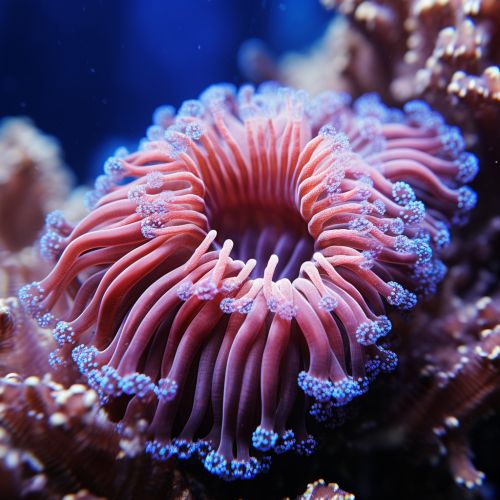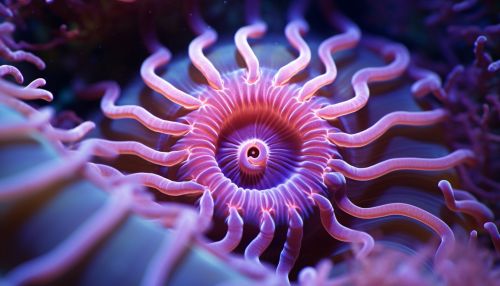Coral Polyps
Introduction
Coral polyps are small, soft-bodied organisms that are the primary builders of coral reefs. These marine invertebrates belong to the class Anthozoa and are related to sea anemones and jellyfish. They are colonial, meaning they live in large groups, and they secrete calcium carbonate to form a hard skeleton that serves as the structure of the reef.
Anatomy and Physiology
A coral polyp has a cylindrical body with a mouth at one end surrounded by a ring of tentacles. The mouth leads to a gastrovascular cavity where digestion takes place. The tentacles are equipped with specialized cells called cnidocytes that contain stinging organelles known as nematocysts. These are used for capturing prey and for defense against predators.


The body wall of a coral polyp is composed of two layers of cells: the outer epidermis and the inner gastrodermis, separated by a layer of jelly-like substance called the mesoglea. The gastrodermis is responsible for the secretion of calcium carbonate, which forms the hard skeleton of the coral.
Reproduction
Coral polyps reproduce both sexually and asexually. In sexual reproduction, polyps release eggs and sperm into the water, where fertilization occurs. The resulting larvae, known as planula, float in the water until they find a suitable substrate to attach to and grow into a new coral colony.
Asexual reproduction in coral polyps occurs through a process called budding, where a new polyp grows out from the body of an existing one. This is how coral colonies expand and form the complex structures of a coral reef.
Diet and Nutrition
Coral polyps have a unique method of obtaining nutrition. They are equipped with photosynthetic algae known as zooxanthellae that live within their tissues. These algae convert sunlight into energy through photosynthesis, providing the polyps with a source of nutrients. In return, the polyps provide the algae with a protected environment and the compounds necessary for photosynthesis.
In addition to the nutrients provided by the zooxanthellae, coral polyps also capture plankton and small fish using their tentacles.
Role in Coral Reefs
Coral polyps play a crucial role in the formation of coral reefs, which are among the most diverse and complex ecosystems on Earth. The hard skeletons secreted by the polyps form the structure of the reef, providing a habitat for a wide variety of marine organisms. Coral reefs also play a vital role in maintaining the health of the world's oceans by providing spawning and nursery grounds for a large number of fish species.
Threats and Conservation
Coral polyps, and the reefs they form, face numerous threats. These include climate change, ocean acidification, overfishing, and pollution. These threats can lead to coral bleaching, a phenomenon where the polyps expel their symbiotic algae, causing the coral to turn white and often leading to its death.
Conservation efforts are underway worldwide to protect and restore coral reefs. These include the establishment of marine protected areas, reef restoration projects, and research into coral breeding and transplantation techniques.
